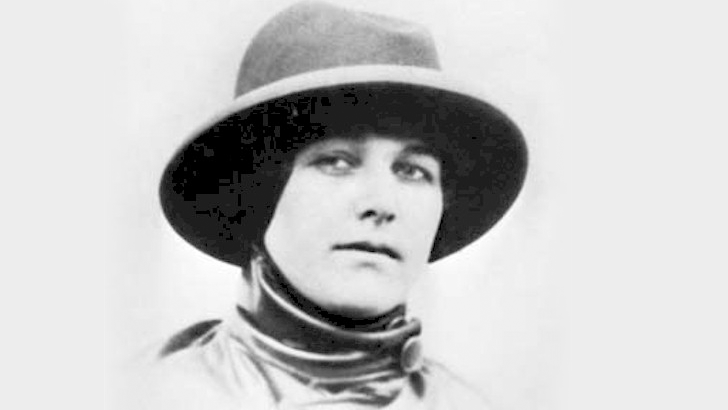Larissa Reisner: poet’s soul, fighter’s rage

“An uprising passes by without trace in big cities. A revolution has to be great and victorious if the traces of havoc, its heroic abrasions and white bullet-scars on walls pock-marked by machine-gun fire are to be preserved on stone and iron if only for a few years..”
Larissa Reisner’s account of the failed Hamburg uprising of 1923 and her chronicles of Weimar Germany capture the immediacy of revolution. Her journalism is vital, witty and savage.
But she was more than an observer; she was also an active Bolshevik who risked life and limb in the Russian Civil War. Karl Radek wrote that she combined the soul of a poet with the rage of a fighter.
Reisner was born on 1 May 1895 in Poland. She came from a political family – her father a law professor who moved in radical circles. With her mother, he fled from Russia to Berlin fearing political persecution. In exile they hosted a variety of prominent figures in the socialist movement including Karl Liebknecht and August Bebel.
Reisner was a precocious child who soaked up the revolutionary atmosphere of her home; she wrote her first play at 12. The family returned to Russia after the 1905 revolution, and her parents joined the Russian Social Democratic Labour Party.
Like many children of the intelligentsia, Reisner attended university. Unlike many young intellectuals she was appalled by the prospect of world war. In 1914, outraged by the chauvinist, pro-war sentiments of the artistic milieu, Reisner and her father established an anti-war magazine. Her family pawned everything they had to finance the project.
This experience had a radicalising impact on the young revolutionary. She abandoned the comfortable, self-satisfied confines of St Petersburg’s intellectual circles.
During the 1917 revolution Reisner taught at the soldiers’, sailors’ and workers’ schools, and wrote numerous revolutionary pieces. She offered her services to the new workers’ government and joined the Bolsheviks in 1918. She was a prominent figure in the Red Navy, leading expeditions in the night and writing about them during the day.
In 1919 she served as the Commissar at the Naval Staff Headquarters in Moscow. Two years later she and her husband, the sailor Raskolnikov, were appointed as Bolshevik representatives to Afghanistan. Reisner’s writings offer a fascinating glimpse into the class politics of that country. They detail the difficulties that the representatives of the revolutionary government faced when translating working class internationalism into diplomacy.
After the breakdown of her marriage, Reisner returned to Europe. She was fired by the prospect of revolution in Germany and took up her pen to document the workers’ struggle, producing her most famous work Hamburg at the Barricades. On reaching revolutionary Hamburg she wrote, “After all that flabbiness and greasiness, here is something solid, strong and vital.”
Despite the defeat of the revolution in Germany, Reisner returned to Russia inspired. She set herself the project of writing a treatise on the situation of workers in the Urals. It was not to be; she died of typhoid at age 30.
Although young, Reisner left a legacy. Radek says of her work:
“A few articles and small books are all Larissa Reisner has left. Her one theme is the October Revolution. But so long as people struggle and think and feel – so long as they want to know ‘how it all happened,’ they will read those books and, once they begin them, will not lay them down until they have reached the last page, because they breathe the revolution.”